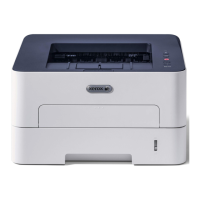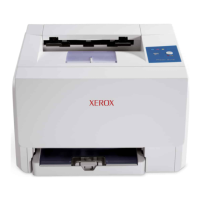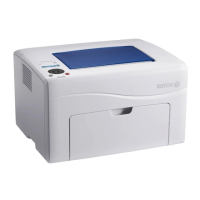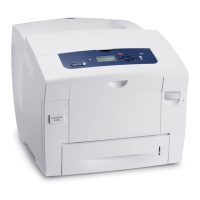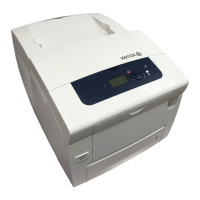If
characteri
sti c overflow
occurs,
the basi c processor always
traps to location X'44' with
the
general
registers unchanged
and
the
condition code
set
to 0110
if
the
result is
positive,
or
to 0101
if
the result
is
negative.
FLOATING-POINT
MULTIPLY
AND
DIVIDE
The floating round
(FR)
and
floating
zero
(FZ) mode
con-
trol bits
determine
the
operation
of
floating-point
multi-
plication
and division (if
characteristic
overflow does
not
occur
and
division by zero
is
not
attempted)
as follows:
FR
Floating round:
FR
= 0
No
rounding
specified.
FR
= 1
The
results
of
floating
multiplication
and
division instructions
are
to
be
rounded. For
multiply
or
divide
operations,
a normalized
product
or
quotient
is
produced, appended
by a guard
digit.
This wi
II
be an absolute
value.
Note:
The example
above
(under
"Floating-Point
Add and Subtract")
is
not possible for multiply
and
divide.
Therefore,
there
is
never
a time
penalty
for rounding.
FZ Floating zero:
FZ = 0 If the final result
of
a
multiplication
or
divi-
sion
operation
cannot
be expressed in
normal-
ized
form
because
of
the
characteristic
being
reduced below
zero,
underflow has
occurred.
If underflow occurs,
the
result is
set
equal to
"true"
zero
and the
condition
code
is
set
to
1100.
If
underflow does
not
occur,
the
condition
code
is
set
to 0010
if
the result is
positive, to
0001
if
the
result is
negative,
or
to 0000
if
the result is
zero.
FZ = 1 Underflow causes
the
basi c processor to
trap
to location
X'44'
with
the
contents
of
the
general
registers
unchanged.
.The condition
code
is
set
to 1110
if
the
result
is
positive,
or to
1101
if
the result is
negative.
If
under-
flow does not
occur,
the
resultant
action
is
the
same as
that
for FZ =
O.
If the divisor is zero in a
floating-point
division,
the
basic
processor always traps to location
X'44'
with the
general
registers unchanged and the condition
code
set
to 0100.
If
characteristic
overflow occurs, the
basic
processor always
traps to location X'44' with the
general
registers unchanged
and
the condition
code
set
to 0110
if
the
result
is
positive,
or
to 0101
if
the
result
is
negative.
CONDITION
CODES
FOR
FLOATING-POINT
INSTRUCTIONS
The condition
code
settings for
floating-point
instructions
are
summarized in Table
8.
The following provisions
apply
to
all
floating-point
instructions:
1.
Undeflow
and
overflow
detection
apply
to the final
characteristic,
not to
any
"intermediate"
value.
2.
If
a
floating-point
operation
results in a
trap,
the
origi-
na
contents
of
all
general
registers remain
unchanged.
3.
All shifting,
truncation,
and
rounding
are
performed
on absolute
magnitudes~
If the fraction is
negative,
then the
two's
complement is formed
after
shifting
or
truncation.
FAS
FLOATING
ADD
SHORT
0Nord
index
alignment)
The
effective
word and the
contents
of
register R
are
loaded
into a
set
of
internal
registers
and
a low-order hexadecimal
zero
(guard
digit)
is
appended
to both fractions,
extending
them to seven
hexadecimal
digits
each.
FAS
then forms
the
floating-point
sum
of
the two numbers. (See
"FR
Floating
round" under
"Floating-Point
Add
and
Subtract",
if
round-
ing
applies.)
If no
floating-point
arithmetic
fault
occurs,
the
sum
is loaded into register R as a short-format
floating-
point
number.
Affected:
(R),
CC
(R)
+
EW-R
Trap:
Floating-point
arith-
metic
fault
FAL
FLOATING
ADD
LONG
(Doubleword
index
alignment)
The
effective
doubleword and contents of registers
Rand
Ru1
are
loaded into a
set
of
internal
registers.
The
operation
of
FAL
is
identical
to
that
of
FLOATING
ADD
SHORT
(FAS)
except
that
the fractions to be
added
are
each
14 hexadecimal
digits
long, guard
digits
are
ap-
pended to
the
fractions
only
if
rounding is
specified,
and R
must be an
even
value
for
correct
results. If no
floating-
point
arithmetic
fault
occurs,
the sum
is
loaded into
regis-
ters
Rand
Ru1
as a long-format
floating-point
number.
Affected:
(R),
(Ru1), CC
(R,
Ru1)
+
ED
-
R,
Ru1
Trap:
Floating-point
arith-
metic
fault,
instruc-
tion
exception
Floating-Point
Arithmetic Instructions 77
